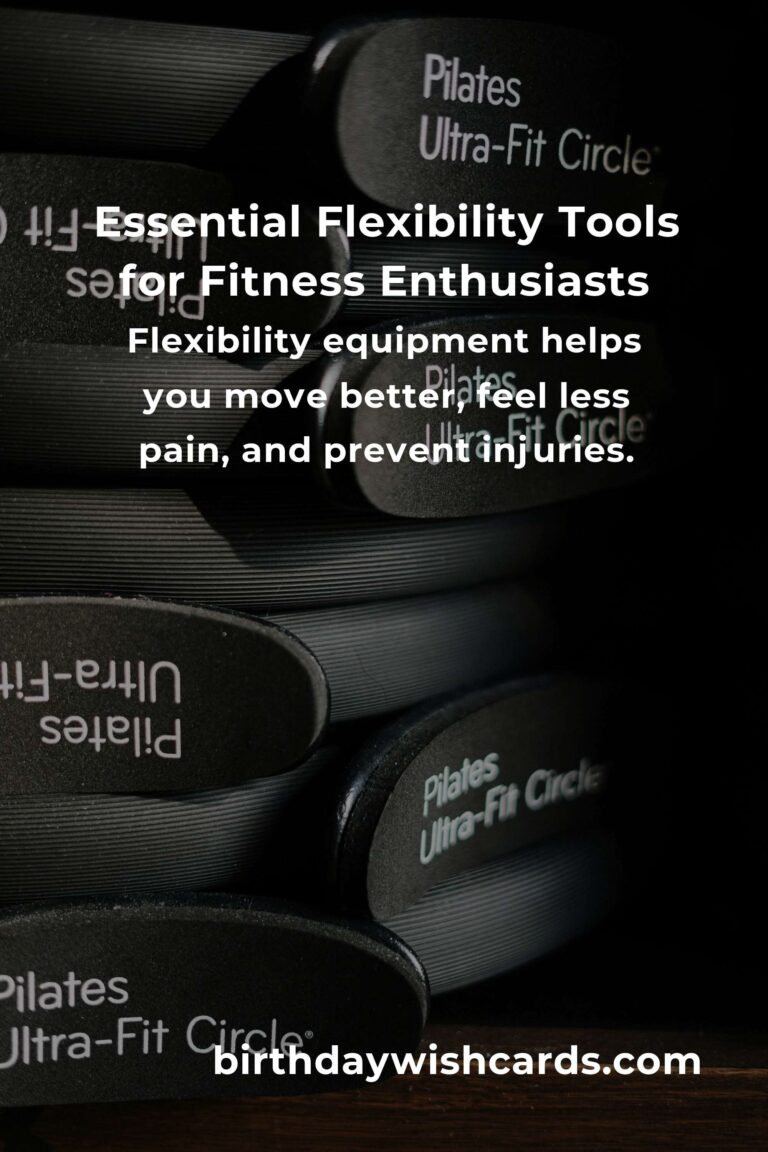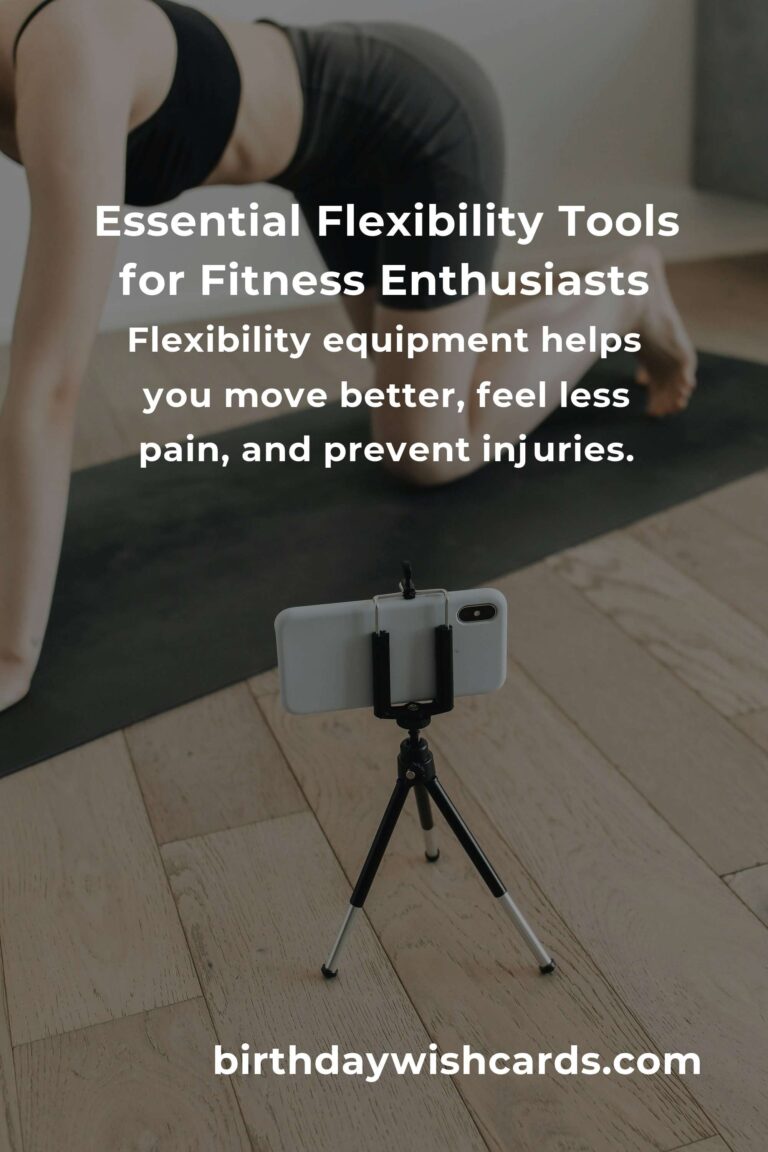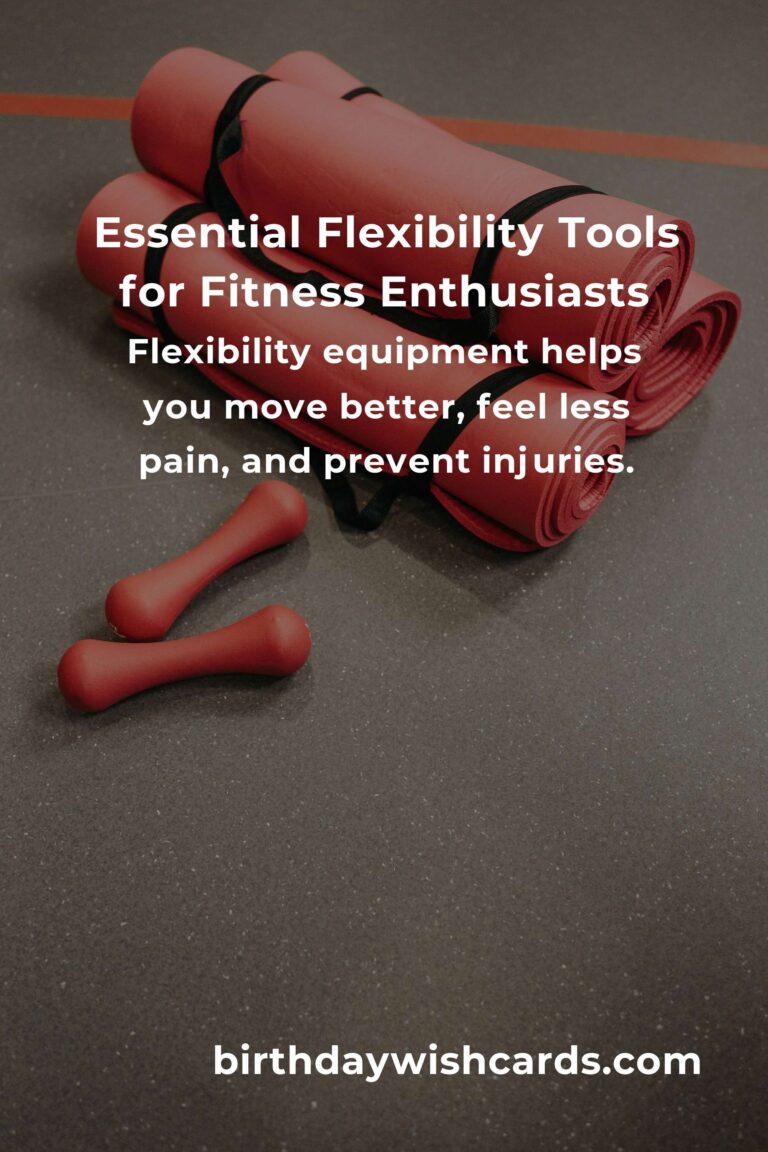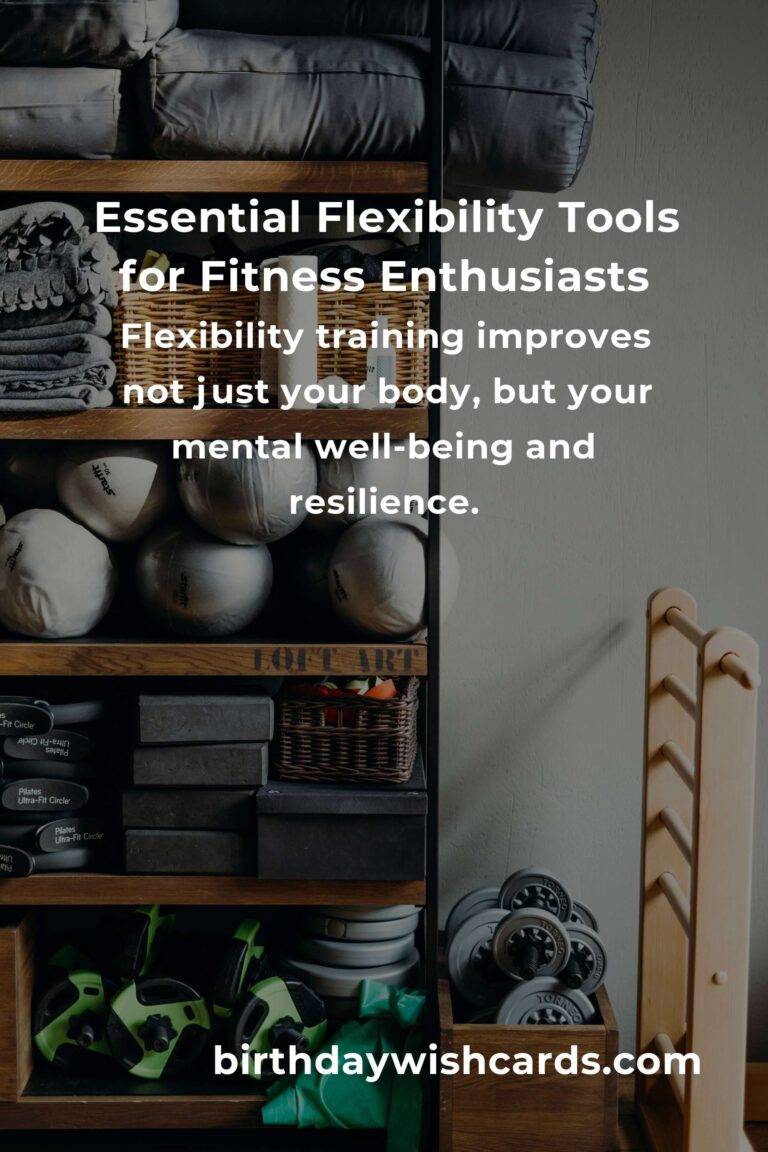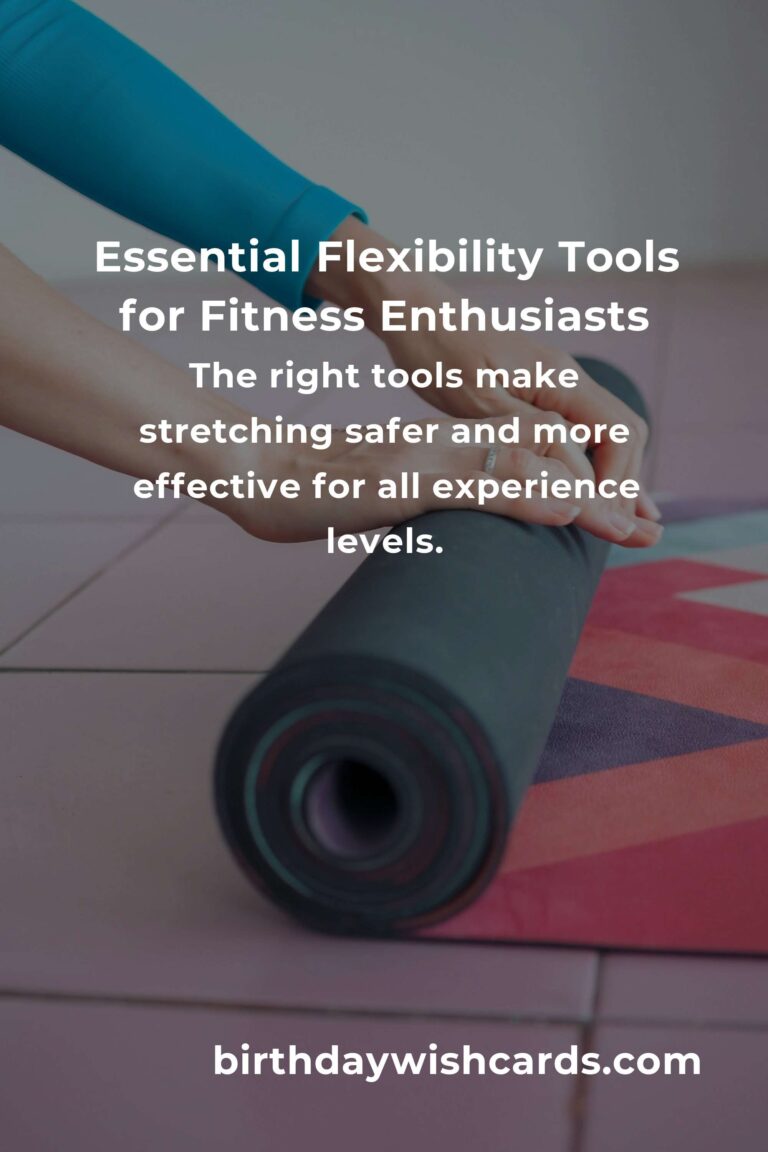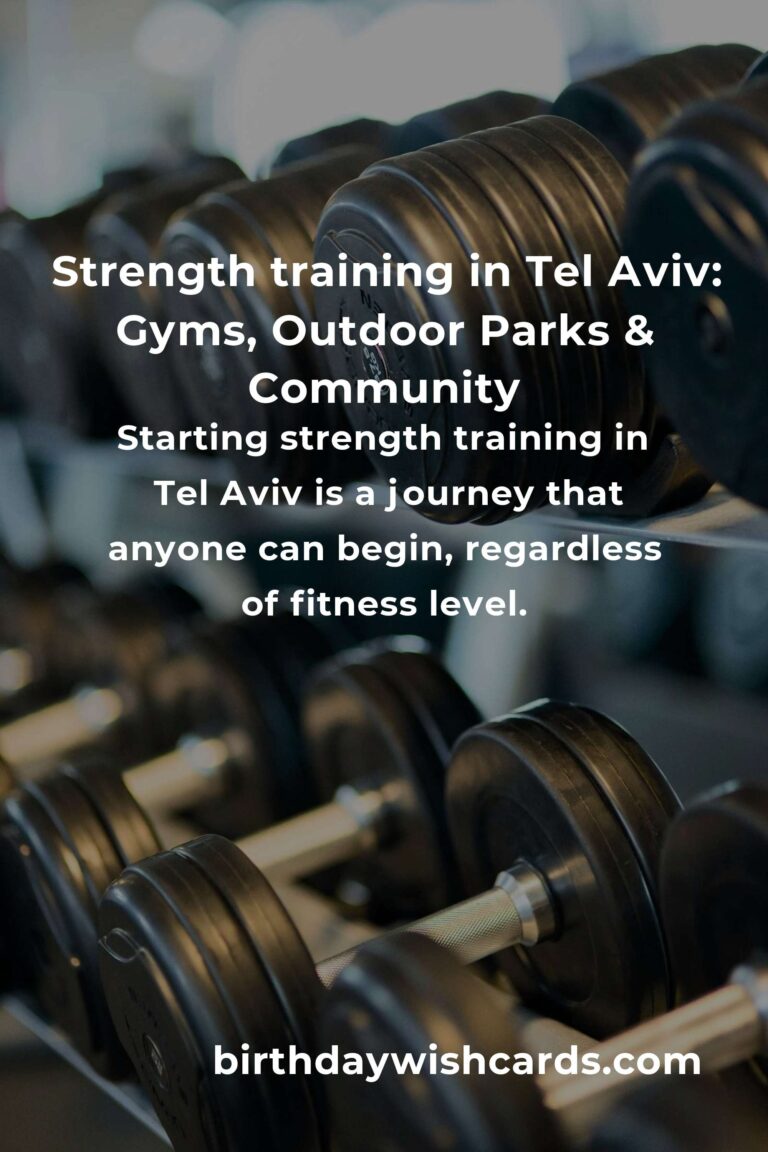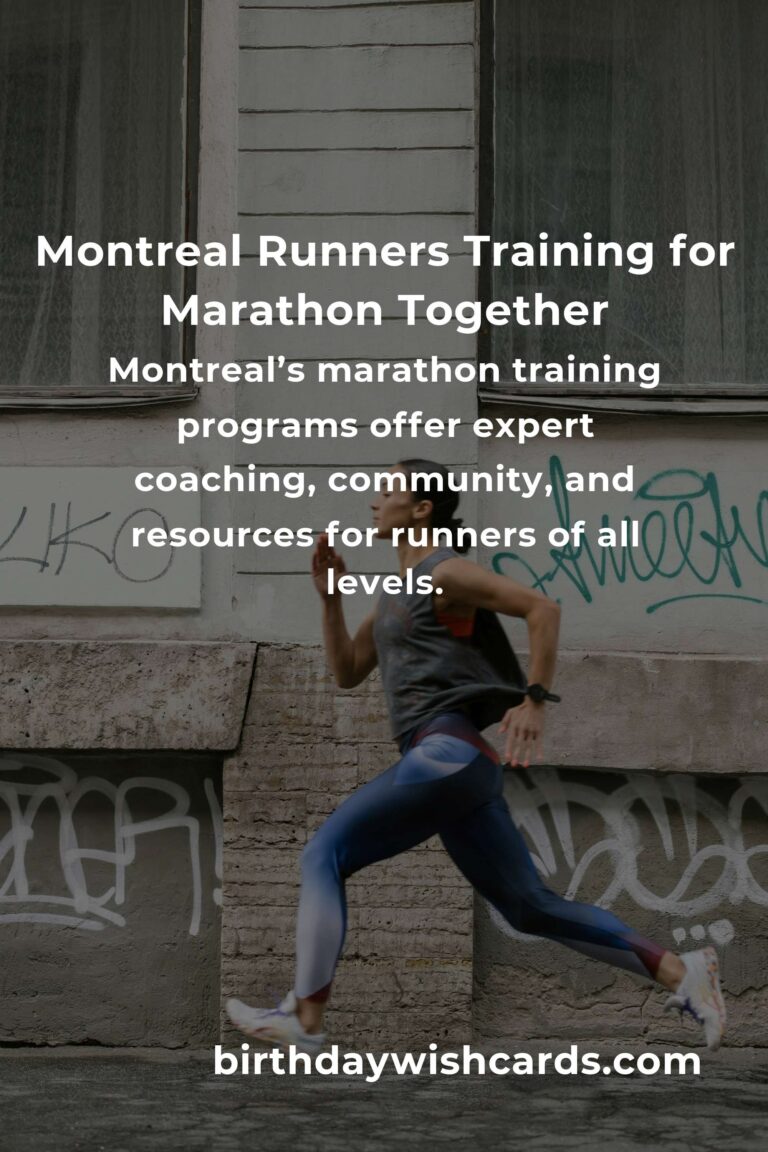
In the world of fitness, strength and endurance often steal the spotlight, but true athleticism and well-being demand something equally crucial: flexibility. Whether you’re a dedicated yogi, a weekend warrior, or simply seeking to move with more ease and less pain, investing in the right flexibility equipment can transform your routine and your results. This in-depth guide will help you unlock your body’s potential, discover the best tools, and maximize your flexibility journey, no matter where you start.
Why Flexibility Matters: Beyond the Basics
Before you rush to fill your cart with gadgets, it’s essential to understand why flexibility deserves a central role in your fitness regimen. Flexibility isn’t just about touching your toes or executing a picture-perfect split. It’s about:
- n
- Reducing your risk of injury by increasing your joints’ range of motion.
- Improving posture and alignment, which translates to better overall movement patterns.
- Alleviating everyday aches and pains, particularly in the back, hips, and shoulders.
- Boosting athletic performance—helping you run faster, jump higher, and lift heavier.
- Supporting recovery and reducing muscle soreness after tough workouts.
n
n
n
n
Embracing flexibility is about loving your body enough to help it move freely, gracefully, and with resilience. Now, let’s explore the tools that can help you get there.
Essential Flexibility Equipment for Every Level
The world of flexibility gear is vast, but certain tools stand out for their versatility, effectiveness, and user-friendliness. Here’s your roadmap to the best options for home gyms, studios, or on-the-go stretching sessions.
1. Yoga Mats: The Foundation of Flexibility
No flexibility routine is complete without a quality yoga mat. A good mat provides grip, cushioning, and support for everything from gentle stretches to dynamic flows. Look for mats that offer at least 5mm of thickness for joint comfort and are made from non-slip materials. Eco-friendly options, like natural rubber or cork, are great for both your health and the planet.
2. Stretching Straps: Reach Further, Safely
Stretching straps (or yoga straps) are a game-changer for beginners and advanced practitioners alike. These simple yet powerful tools help you access deeper stretches without compromising form. Use them to improve hamstring flexibility, open up tight shoulders, or assist in challenging poses like King Pigeon. Opt for adjustable straps with sturdy D-rings for maximum security.
3. Foam Rollers: Release and Restore
Foam rollers are more than just a recovery tool—they’re essential for improving flexibility through self-myofascial release. By gently rolling over muscles, you break up adhesions and knots, enhancing blood flow and range of motion. Choose rollers with different densities based on your sensitivity and target areas (softer for beginners, firmer for deep tissue work).
4. Resistance Bands: Dynamic Stretching Power
Resistance bands aren’t just for strength training; they’re fantastic for dynamic stretching and mobility work. Loop bands can add resistance or assistance during stretches, making them ideal for dynamic warm-ups, active stretching, and even physical therapy. A set with varying resistance levels ensures you can progress and target all muscle groups.
5. Massage Balls: Pinpoint Precision
For stubborn knots or small muscle groups, massage balls (like lacrosse or peanut-shaped balls) offer targeted relief. Use them on your feet, glutes, shoulders, or anywhere you feel tension. They’re compact, portable, and a must-have for anyone serious about flexibility and recovery.
6. Yoga Blocks: Support and Extension
Yoga blocks provide stability and extension in a variety of stretches. Whether you’re working on deepening your forward fold or supporting your hips in pigeon pose, blocks make flexibility accessible and safe. Foam blocks are lightweight and soft, while cork blocks offer more stability for advanced poses.
7. Stretching Machines: Ultimate Assistance
If you’re dedicated to taking your flexibility to the next level, stretching machines (like leg stretchers or split machines) offer adjustable, supported stretching with minimal risk. These are particularly useful for athletes, martial artists, or dancers aiming for extreme flexibility goals.
How to Choose the Right Flexibility Equipment
With so many options, it’s easy to feel overwhelmed. Here’s how to choose wisely:
- n
- Assess Your Current Flexibility: Beginners might benefit from more supportive tools (blocks, straps), while advanced users may prefer deeper release tools (rollers, bands).
- Consider Your Goals: Are you aiming for general mobility and pain relief, or specific goals like splits or backbends? Match your equipment to your ambitions.
- Space and Portability: If you travel or have limited space, opt for compact tools like straps, bands, and massage balls. Home gym owners might invest in larger equipment.
- Quality Over Quantity: A few well-chosen, durable items can serve you better than a drawer full of random gadgets.
- Budget: While some tools are investments, many effective options are affordable and long-lasting.
n
n
n
n
Building Your Flexibility Toolkit: Sample Setups
Here are three example setups catering to different needs and lifestyles:
The Minimalist
- n
- Yoga mat
- Stretching strap
- Massage ball
n
n
This trio covers most stretches, is highly portable, and fits any budget.
The Home Gym Enthusiast
- n
- Yoga mat and blocks
- Foam roller
- Resistance bands
- Stretching machine (optional)
n
n
n
Perfect for those committed to a daily flexibility practice and who have space for more robust tools.
The Athlete or Dancer
- n
- All of the above, plus:
- Advanced stretching machines (leg stretchers, backbenders)
- High-density foam rollers
- Peanut-shaped massage balls
n
n
n
Designed for individuals pursuing peak performance and advanced flexibility goals.
How to Use Flexibility Equipment Effectively
Owning the right tools is only half the journey—using them with intention and consistency is what drives real results. Here are some actionable tips:
- n
- Warm Up before stretching to increase blood flow and reduce injury risk. Consider dynamic movements or a few minutes of light cardio.
- Progress Gradually: Don’t force your body into deep stretches. Use equipment to gently expand your range of motion over time.
- Breathe Deeply: Breathwork calms the nervous system and helps release muscle tension.
- Stay Consistent: Small, regular sessions (10-15 minutes a day) are more effective than occasional marathon stretches.
- Listen to Your Body: Discomfort is normal; pain is not. Use props to support rather than strain.
- Incorporate Recovery: Tools like foam rollers and massage balls aid muscle recovery post-workout, enhancing flexibility gains.
- Seek Guidance: Online tutorials, classes, or professional trainers can help you get the most from your equipment and avoid injury.
n
n
n
n
n
n
Flexibility Equipment for Special Populations
Flexibility is for everyone, but needs can vary:
- n
- Seniors: Softer mats, gentle straps, and extra support (like chairs or blocks) make stretching safer and more accessible.
- People with Injuries: Always consult a health professional before starting. Focus on supportive props and avoid overstretching injured areas.
- Kids: Lightweight, colorful mats and soft foam blocks can make stretching fun and safe for young athletes or students.
n
n
The Emotional Benefits of Flexibility Training
Beyond the physical, flexibility equipment can profoundly impact your emotional and mental well-being. The ritual of unrolling your mat, focusing on your breath, and tuning into your body fosters mindfulness and stress relief. Stretching can become a moving meditation, a daily act of self-care that grounds and energizes you.
Many fitness enthusiasts find that working with flexibility equipment encourages patience and self-compassion. Progress is measured in millimeters, not miles, teaching us to celebrate small victories and listen to our bodies’ wisdom. Over time, the discipline and attention required for flexibility work can ripple into other areas of life, building resilience and confidence.
Must-Try Flexibility Routines with Equipment
If you’re eager to put your new gear to work, here are a few routines to get you started:
Morning Mobility Flow
- n
- Yoga mat, strap, and block
- 5 minutes of dynamic stretching (cat-cow, hip circles, arm swings)
- Hamstring stretch with strap (hold each side 30-60 seconds)
- Supported forward fold with block
- Seated twist (use block under hips for support)
n
n
n
n
Post-Workout Recovery
- n
- Foam roller and massage ball
- Roll out calves, quads, and upper back (1-2 minutes each)
- Target tight spots with massage ball (30 seconds per area)
- Gentle chest opener over foam roller
n
n
n
Deep Flexibility Session
- n
- Yoga mat, resistance bands, stretching machine
- Dynamic warm-up (jumping jacks, lunges)
- Seated forward fold with band assistance
- Hip flexor stretch using stretching machine
- Backbend with block or machine support
n
n
n
n
Maintaining and Caring for Your Flexibility Equipment
To ensure your tools last and stay hygienic:
- n
- Wipe mats and blocks with gentle cleaners after each use.
- Air dry foam rollers and bands to prevent mildew.
- Inspect straps and bands regularly for wear and tear.
- Store equipment in a cool, dry place away from sunlight.
n
n
n
Conclusion: Embrace the Journey
Building flexibility isn’t a race—it’s a lifelong journey that rewards patience, consistency, and self-love. With the right equipment, you empower yourself to move better, feel better, and experience the joy of a flexible, resilient body. Whether you’re starting from scratch or seeking to elevate your practice, let this guide be your roadmap to unlocking your true potential. Remember: every stretch is a step towards a more vibrant, capable you.
Frequently Asked Questions
Q: How often should I use flexibility equipment?
A: Aim for at least 3-5 times per week, but daily short sessions yield the best results. Listen to your body and adjust as needed.
Q: Can I use flexibility equipment if I’m not flexible yet?
A: Absolutely! Most tools are designed to support beginners and make stretching safer and more effective.
Q: What equipment is best for tight hamstrings?
A: Stretching straps and foam rollers are excellent for targeting tight hamstrings and improving range of motion.
Q: Are stretching machines worth the investment?
A: If you’re serious about achieving advanced flexibility goals or need extra support, they can be highly effective. For most people, basic tools suffice.
Q: How do I know if I’m overstretching?
A: Sharp pain, joint discomfort, or lingering soreness are signs to back off. Stretching should feel challenging but never painful.
Flexibility equipment helps you move better, feel less pain, and prevent injuries.
The right tools make stretching safer and more effective for all experience levels.
Yoga mats, straps, foam rollers, and resistance bands are essential for any flexibility routine.
Massage balls and yoga blocks provide targeted support and deeper release.
Stretching machines offer advanced support for athletes and those with ambitious flexibility goals.
Consistent use and gentle progress are key to unlocking your flexibility potential.
Flexibility training improves not just your body, but your mental well-being and resilience.
Even beginners can benefit greatly from simple tools like straps and blocks.
Proper care and cleaning extend the life of your flexibility equipment.
Embracing flexibility is an act of self-love that pays off in every aspect of fitness and life.
#FlexibilityJourney #StretchBetter #FitnessEquipment #HealthyMovement #StretchingTools #YogaEssentials #ActiveLifestyle #WellnessGear #BodyPositivity #RecoverStronger


